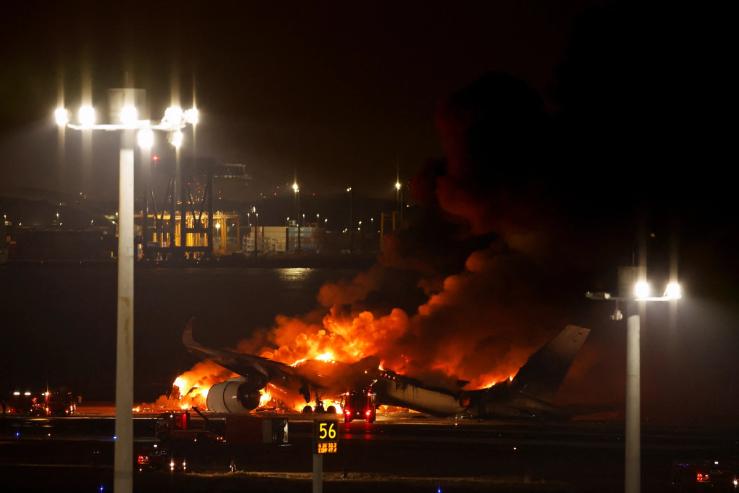The News
A Japan Airlines flight arriving from Sapporo erupted into flames on Tuesday after colliding into a Japanese Coast Guard plane used for earthquake relief during landing at Tokyo’s Haneda Airport.
All 379 passengers and crew were safely evacuated from the Airbus A350, but five servicemen aboard the Coast Guard plane were killed and one was seriously injured, Japanese authorities said.
Details of the collision’s cause are yet to be released, but Japanese officials have been warning about a lack of air traffic control staffing and overburdened workers for several years now.
The collision marks the first real test for the latest generation of aircraft used for trans-continental travel, showcasing how state-of-the-art technology, design, and training proved remarkably effective in an emergency.
SIGNALS
Engineers have learned from past mistakes to make new aircraft ‘phenomenally survivable’
This is the first time in commercial aviation history that an aircraft body made out of carbon fiber has been put to the test in a major fire, and the accident will provide “a massive trove of data” on how the material can withstand flames, according to The Air Current’s editor-in-chief Jon Ostrower. Airliners like the A350 “incorporate innumerable lessons garnered over the years from previous accidents, strong regulations and deliberate over-engineering,” he explained, making modern aircraft “phenomenally survivable.”
Japanese airlines working to mitigate cabin crew’s “year-round jetlag”
Social media users praised the flight attendants for quickly evacuating the nearly 400 passengers. Their ability to do so may be the result of a cultural workplace shift spurred by the Japanese aviation authority’s 2019 to 2022 investigation into the effects of cabin crew fatigue and work performance. Previously, experts had warned about “sleeplessness…unique to Japanese society” that extended to the aviation industry, with flight attendants reporting “year-round jetlag.” The study, presented to the International Civil Aviation Organization, offered several recommendations to address that workload stress, including reducing working hours for flight attendants. Japanese airlines like Zipair are also training cabin crew on how to maximize rest by using smartphones and smartwatches to track sleep patterns.
Understaffing in U.S. air traffic control raises worries of potentially deadly crashes
In the U.S., aviation experts say air traffic control is “a safety net under mounting stress.” A New York Times investigation revealed that in 2023, multiple close call commercial aircraft collisions happened several times a week on average. While part of the problem is that many airports have failed to install warning systems to prevent runway collisions, the more acute challenge is that air traffic control facilities are “chronically understaffed,” the Times reported. Only three of the 313 commercial airports in the U.S. met Federal Aviation Administration standards, the investigation found. The U.S. air system remains the safest in the world, but faults in the system worry experts that it’s “only a matter of time until a deadly crash.”



